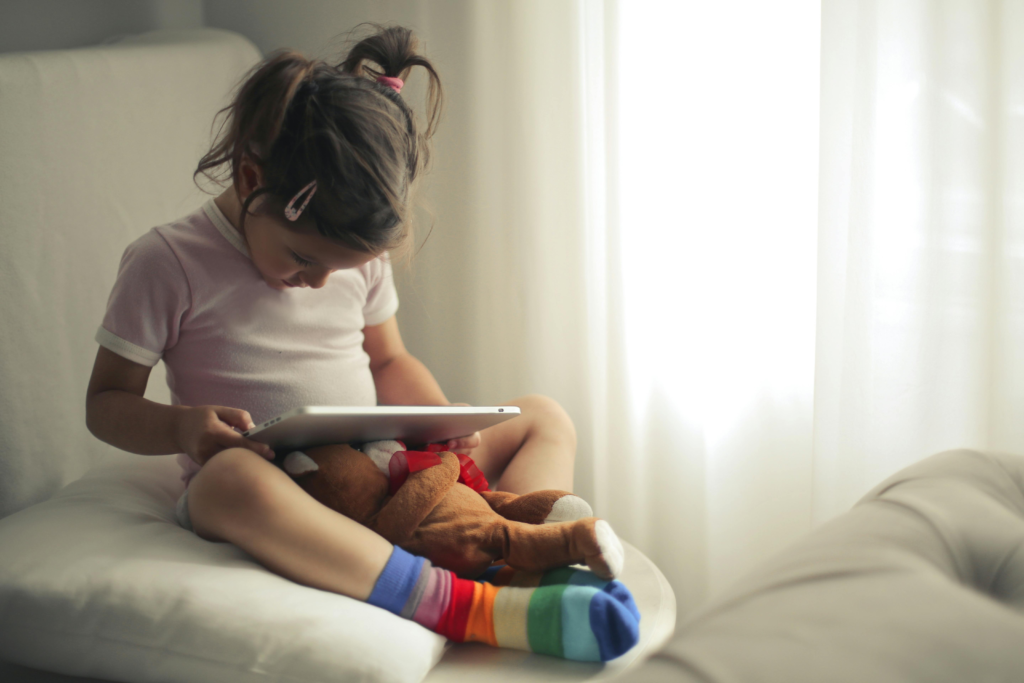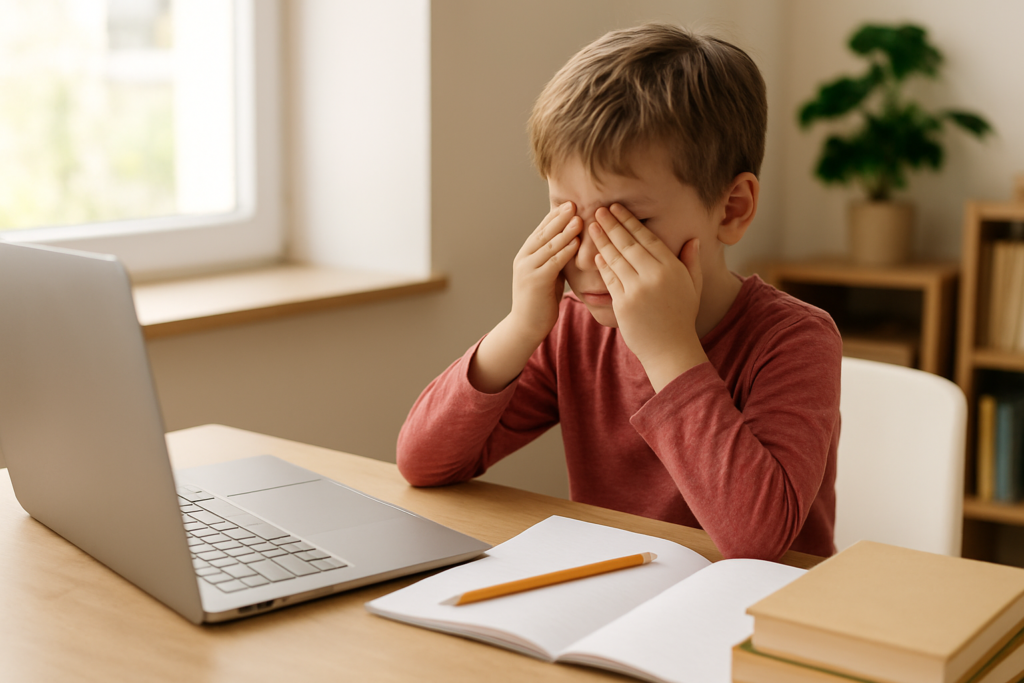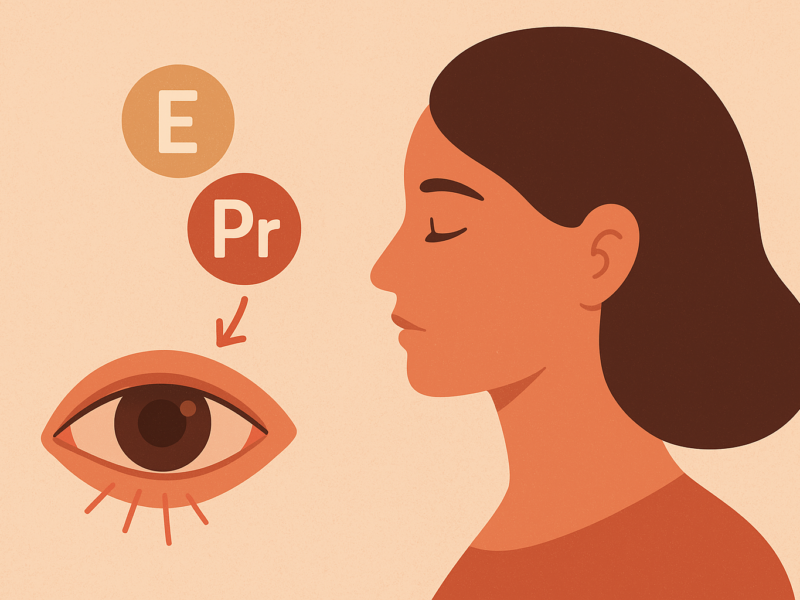Introduction
Screens are everywhere — from online learning to video games and cartoons. But what happens when a child’s developing eyes are exposed to hours of screen light every day?
In this comprehensive guide, we’ll explore the latest research on how screen time affects children’s eye development, what symptoms to watch for, and how to build healthy digital habits from an early age.
1. The Growing Concern: Screen Time and Vision in Children
- Global increase in screen exposure before age 10.
- Pediatric ophthalmologists reporting more cases of myopia and eye fatigue.
- Blue light exposure’s link to disrupted sleep and cognitive development.
- Expert commentary: WHO recommends <2 hours per day for ages 6–12.

2. Understanding the Science: How Screens Affect the Developing Eye
- Anatomy of a child’s eye vs. adult eye (shorter focal length, more sensitive retina).
- Blue light wavelength and circadian rhythm disruption.
- Studies linking digital focus to myopia progression.
- Reduced blinking → dry eyes, irritation.
- Early neuro-visual development: connection between eye strain and attention span.
3. Common Symptoms of Screen-Induced Eye Strain in Kids
- Squinting or rubbing eyes.
- Complaints of blurry vision or headaches.
- Eye fatigue after homework or gaming.
- Difficulty focusing between near and far objects.
- Behavioral signs: irritability, poor sleep, avoidance of reading.
4. Blue Light Exposure and Its Impact on Sleep & Hormones
- How melatonin suppression affects kids more than adults.
- Connection between late-night screen use and poor school performance.
- Pediatric studies (2023–2025): link between blue light, cortisol, and eye fatigue.
- Simple household changes to protect circadian rhythm: dim lights, device curfew, amber filters.
5. The Rise of Myopia in the Digital Age
- Global myopia epidemic: 50% of the world expected to be nearsighted by 2050.
- Early onset and fast progression in children.
- Outdoor play and natural sunlight as proven prevention.
- Why focusing distance matters: 30 cm vs 60 cm makes a difference.
6. Safe Screen Habits by Age Group
| Age | Recommended Screen Time | Eye Health Tips |
|---|---|---|
| Under 2 | Avoid screens | Focus on sensory play and daylight exposure |
| 2–5 | <1 hour/day | Co-view educational content, frequent breaks |
| 6–12 | <2 hours/day | Apply 20-20-20 rule, maintain good posture |
| 13–18 | 2–3 hours (non-school) | Blue-light filter use, outdoor balance |

7. The 20-20-20 Rule for Kids
Teach it as a game — every 20 minutes, look 20 feet away for 20 seconds.
Apps and timers help gamify breaks.
Parents can model the same behavior.
8. Nutrition and Eye Development
- Key nutrients for children’s visual health:
- Lutein & Zeaxanthin – filter blue light naturally.
- Omega-3s – support retina and tear production.
- Vitamin A – essential for corneal health.
- Best food sources: carrots, eggs, spinach, salmon, blueberries.
🔗 Related Articles
9. When to See an Eye Doctor
- First check-up at age 3–5 or sooner if symptoms appear.
- Annual exams during school years.
- Pediatric ophthalmologists can detect early refractive changes.
- Warning signs of progression.
10. Creating a Screen-Safe Home Environment
- Adjust brightness and color temperature.
- Use anti-glare screen protectors.
- Position screens at eye level and 20–28 inches away.
- Encourage non-digital hobbies: drawing, reading, outdoor play.
FAQ Section
Q1: Can screen time cause permanent eye damage in children?
No, but it can accelerate nearsightedness (myopia) and cause chronic eye fatigue if habits are unhealthy.
Q2: What’s the best time for kids to use screens?
Morning or early afternoon. Avoid screens 2 hours before bedtime.
Q3: Are blue light glasses safe for kids?
Yes, but they should be lightweight and prescription-matched if needed.
Q4: Do outdoor activities really help?
Absolutely — 1–2 hours of outdoor play daily can reduce myopia risk by up to 40%.



